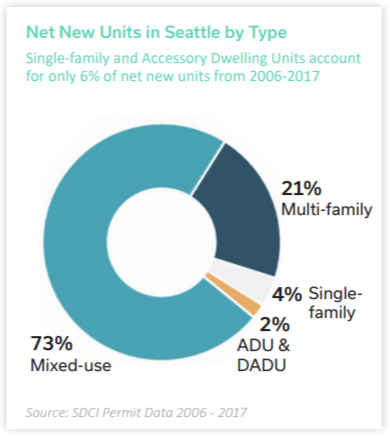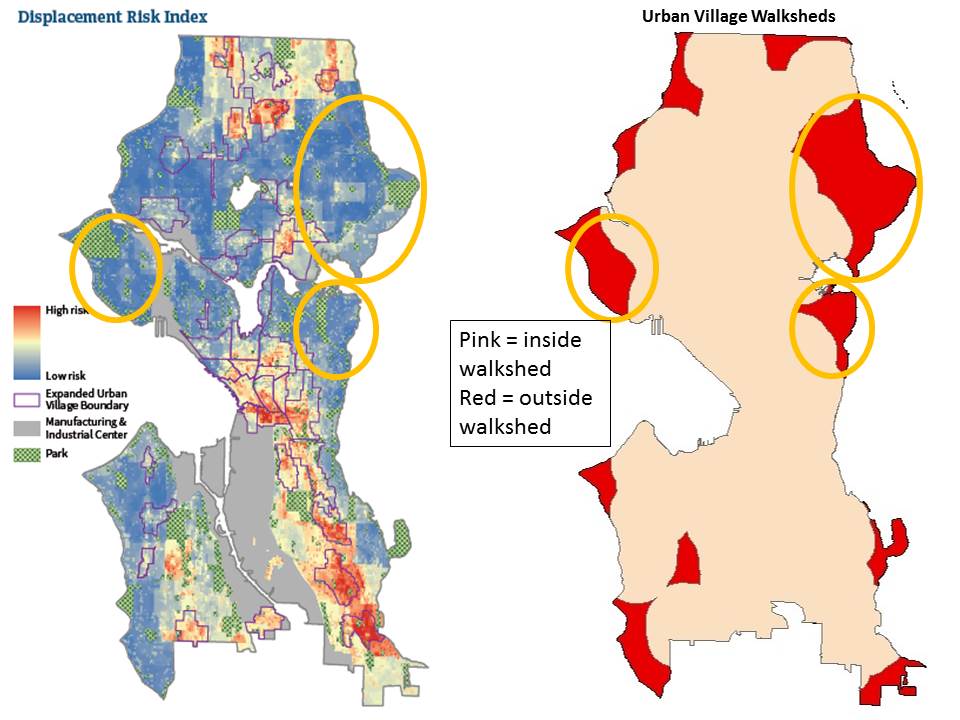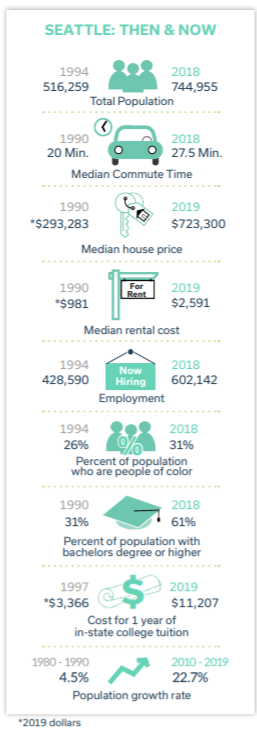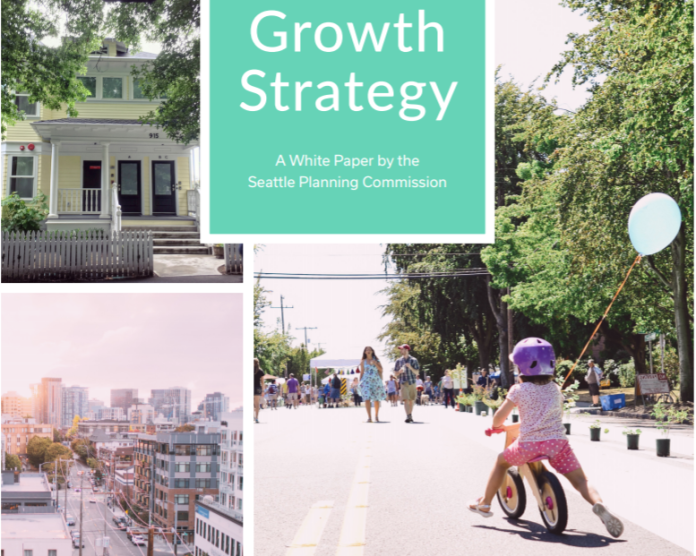Yesterday, the Seattle Planning Commission released a Growth Strategy White Paper calling for dramatic changes to Seattle’s zoning. The white paper builds upon the commission’s Neighborhoods For All Report from last year, and single-family zoning reform clearly remains on the agenda.
“Wrestling with housing crises of their own, Vancouver B.C., Minneapolis MN, and Oregon State have already taken action to allow small scale increases in density,” the paper states. “In response to the housing crisis, many cities across the country are exploring updates to their residential zoning to allow up to three or four units per lot.” [emphasis original]
Switching base zoning to triplexes or fourplexes will be viewed as revolutionary to many Seattleites. A draft recommendation of the Housing Affordability and Livability Agenda (HALA) report was scuttled for less. But other cities have led the way and shown it’s possible, and conditions in Seattle–including the city council–have changed.
For one, in the five years since HALA backlash, rents have continued to climb along with the burden and displacement pressure on tenants, who have grown to a majority of the city and flexed more political muscle. Moreover, our uneven growth has become even more stark as urban villages have shouldered an incredible load when it comes to infill development despite representing a tiny fraction of the overall land. The planning commission notes a whopping 80% of Seattle’s housing growth over the past decade or so has been within Urban Villages.
“Between 2006 and 2017, Urban Villages have accommodated 28,240 of the 35,300 new housing units–80% of the city’s recent housing growth,” the commission wrote. “In that same time, areas that are zoned single-family (which make up 75% of the residential land) only received 6% of the new development.”

The report emphasizes the racial equity implications of such a growth strategy: “Seattle’s existing growth strategy needs revision and evolution to firmly establish a racial equity framework that can respond to the limitations we see in its present form.” To put it geographically, growth is being concentrated in Seattle’s core, the University District, Ballard, the Rainier Valley, while places like Northeast Seattle and Magnolia are nearly off-limits.
Concentrating development to only a small portion of the residential land yields an inequitable distribution of the impacts of growth and limits the effectiveness of the Urban Village growth strategy as a means to promote livable and sustainable neighborhoods across the city. While the current growth strategy creates opportunities for new housing near jobs and transit on a small portion of the city’s residential land, it limits opportunities for growth and flexibility on most of the city’s land. For example, minimum lot sizes do not allow homeowners to subdivide their lot, making it difficult for low-income and/or aging homeowners to stay in their homes while the housing shortage boosts housing prices, and subsequently, property taxes.
Seattle Planning Commission “Growth Strategy White Paper”
The planning commission makes an important point that growth means more than growing pains; it also contributes to livability, especially in areas lacking urban amenities and job opportunities. Toward that end, the white paper pushed a cause near and dear to The Urbanist: adding more Urban Villages.

New types of Urban Villages, such as Urban Hamlets, as discussed in the Planning Commission’s Neighborhoods for All report, could provide moderate increases in housing density around existing commercial nodes, or close to schools and parks. This would allow more residents to access the many amenities and services that draw residents to those neighborhoods. Areas that might support Urban Hamlets include, portions of Delridge, Leschi, Madison Park, Madrona, Magnolia, Montlake, Seward Park, South Beacon Hill, Tangletown, Wedgwood, Sand Point, and others that could be explored further with careful study during the update of the Comprehensive Plan.
Seattle Planning Commission “Growth Strategy White Paper”
We endorsed creating more Urban Villages back at the last major Comprehensive Plan update in 2015 and suggested many of the same location. Spoiler alert: we did not get our way. The quantity of Urban Villages remained the same, although it remains a good idea to this day to add more–whether they’re called “urban hamlets” or something else. The planning commission clearly identified the 2023 Comprehensive Plan update as a tremendous opportunity to correct past mistakes and forge a better way forward.

“The update of the Comprehensive Plan is a timely opportunity to envision a growth strategy designed to advance racial equity, end housing disparities by race, repair harms caused by racially biased policies and ensure that the existential threat of climate change not contribute to racial inequities,” the report concludes. “A city-wide strategy of increased housing options, including affordable housing, paired with expanded public transit can play a significant role in addressing Seattle’s most vexing challenges while creating more walkable and livable neighborhoods for every resident.”
It likely strikes some advocates as tortuously slow to wait three years to fix inequitable zoning and begin growing in a more just and sustainable way. But planning conventions are hard to break. Major comprehensive plan updates are every eight years–even in a major housing crisis nested in an even bigger climate crisis. In reality, it could well take three years to vet and build a consensus around an ambitious rezoning plan. So let’s put our shoulders to the grindstone.
Doug Trumm is publisher of The Urbanist. An Urbanist writer since 2015, he dreams of pedestrian streets, bus lanes, and a mass-timber building spree to end our housing crisis. He graduated from the Evans School of Public Policy and Governance at the University of Washington in 2019. He lives in Seattle's Fremont neighborhood and loves to explore the city by foot and by bike.



